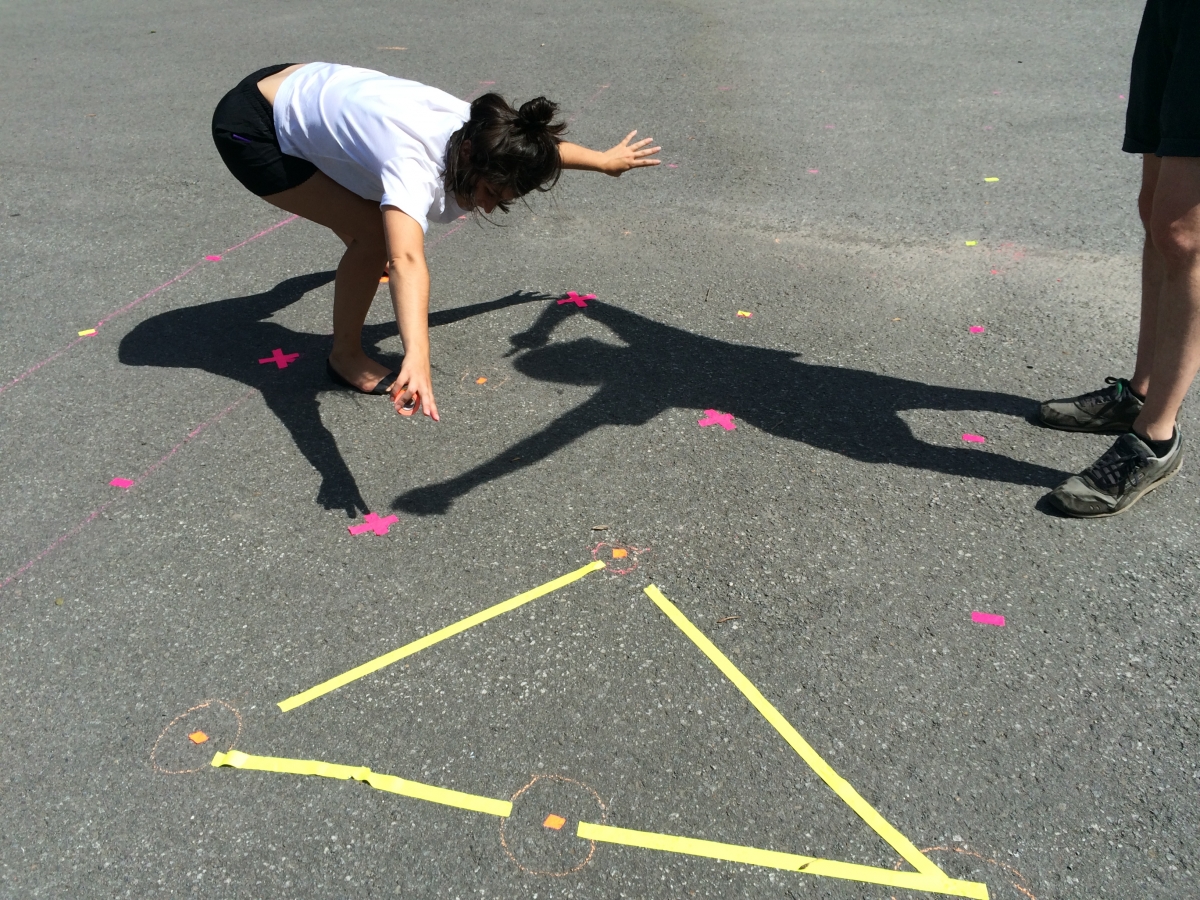Prototyping: Again, with feeling!
Posted by Aug 17, 2017

Daily tous les jours
This post is part of our Public Art Network 2017 Year in Review blog salon.
In 2014, Daily tous les jours was given the opportunity to create an original project for the Mesa Arts Center in downtown Mesa, AZ, to be delivered in 2016. The project timeline of almost two years allowed us to spread out our time on ideation, research, and testing, and to make and test multiple prototypes, adjusting and refining based on what we learned from each.
An iterative process like this is often useful, especially in the context of interactive public art: the collective public has a genius ability to subvert or repurpose objects and installations from their intended purpose. It can therefore be very helpful to periodically get something into the hands of someone who hasn’t been immersed in the project since its conception to see what they will do with it. Workshops with the communities that will ultimately be served by a project can serve as valuable de facto prototyping sessions as well.
More generally, prototype milestones tend to keep all aspects of a project developing, and require settling on forms, materials, sounds, quantities, concepts, etc.—at least long enough to deliver a single prototype. Another benefit of prototyping is that once made concrete (or MDF), certain facets of a project or idea become much easier to define and refine.
It can be very helpful to periodically get something into the hands of someone who hasn’t been immersed in the project since its conception to see what they will do with it.
The following is a description of the process behind our public art installation, Mesa Musical Shadows, and the multiple prototypes that came between initial concept and final delivery.
Mesa Musical Shadows is an interactive pavement that is activated by the shadows of passersby who walk near or across the plaza where it is installed. Custom tiles containing light sensors respond to changes in light, generating music that is emitted through speakers embedded in the plaza. Shadows cast on different tiles trigger different voices, all singing in harmony. As visitors explore different areas of the plaza with their shadows, they become part of a collective sound and body performance.
Read more details on the final project here.
Early Prototypes
Our earliest prototypes were sketches, short smartphone recordings, or fragments of code; whatever could most quickly, cheaply, and easily serve as a proof of concept. Most of these early prototypes were based on entirely different concepts and interactions. Such early prototypes are useful for roughing in ideas to the point that they can be shared with others or saved for later development. One of these early prototypes later became the basis of a different project.
Prototype 1:
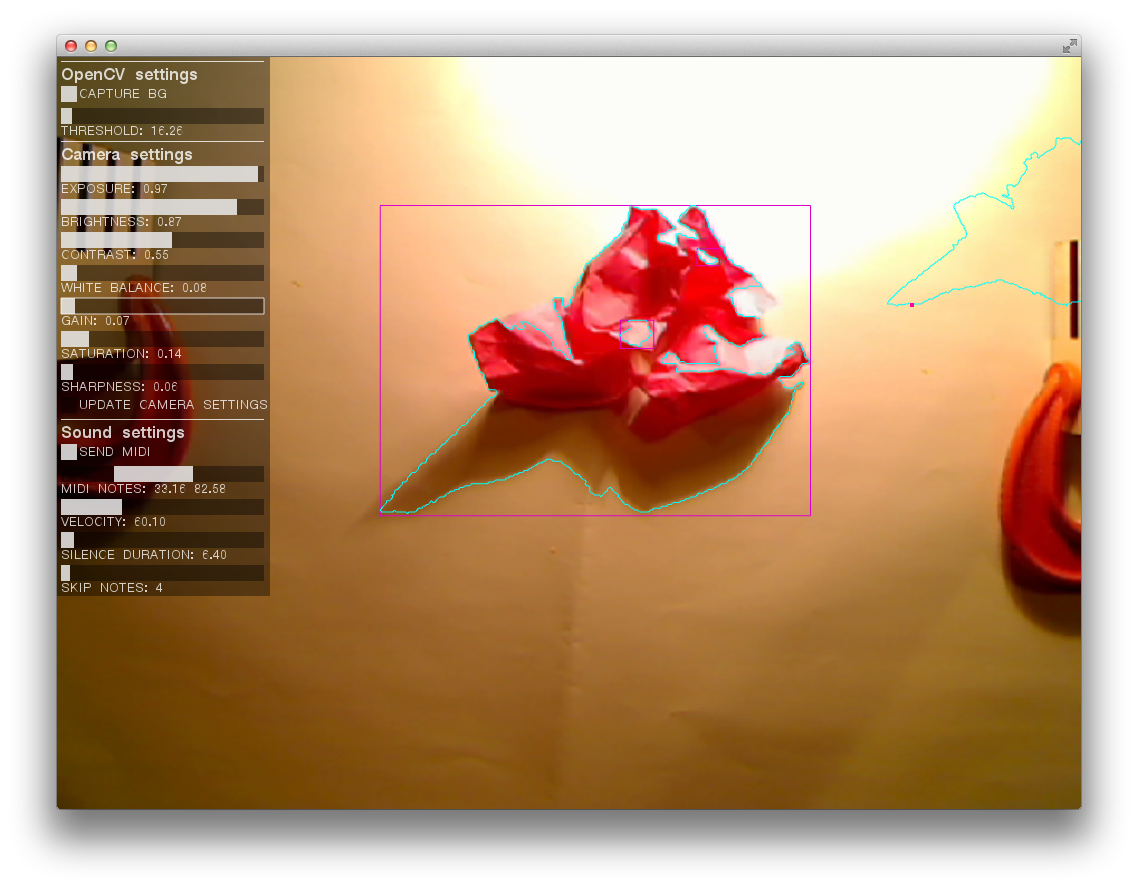
The earliest prototype with a conceptual similarity to the finished project was a distant relative. It was a piece of software created in Open Frameworks that analyzed a camera feed, tracing the shadows of any objects in the camera’s field of vision, and creating a musical score from the objects’ shadows. Though almost entirely different from the project’s final iteration, this prototype proved to us that there was potential depth to the concept of shadows creating music, and convinced us to continue in this direction.
Prototype 2:
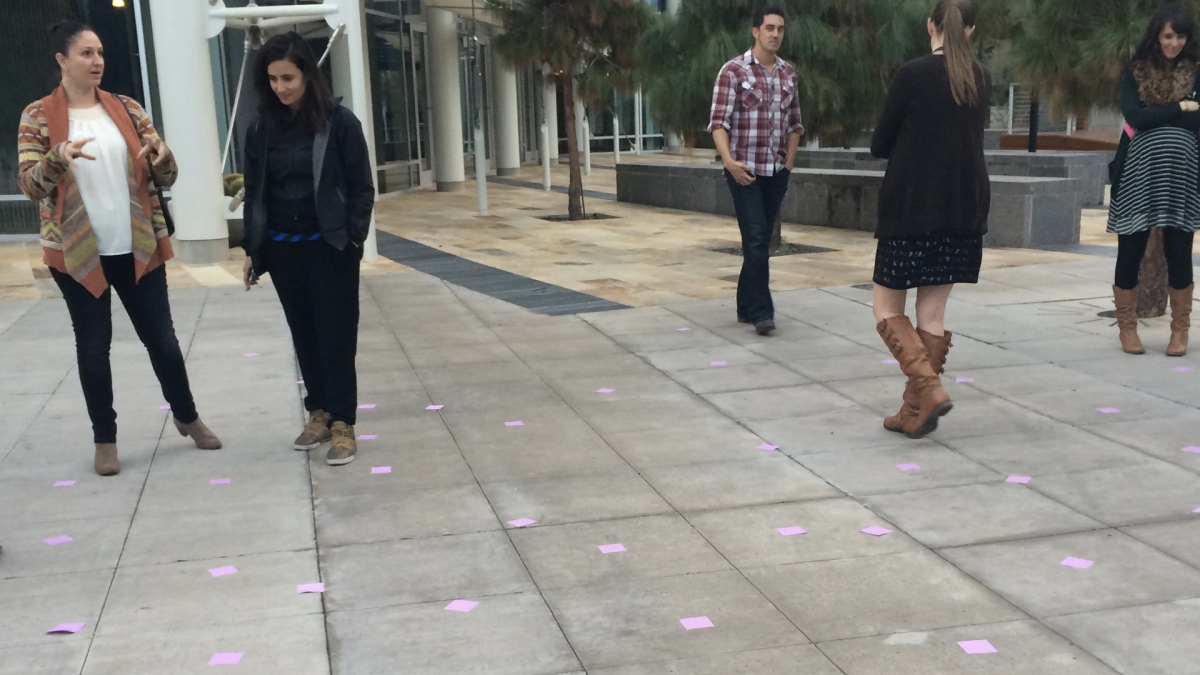
We committed early on to involve members of the local community in the project. We held a series of public workshops exploring what sort of project would best serve the local community. One of these workshops allowed us to prototype our concept using Post-it Notes, which allowed us both to demonstrate and receive immediate feedback on our concept early in the process.
Prototype 3:
The next iteration was another piece of software, this time made in processing (whatever works!), that allowed us to explore the potential of a grid of sensors as a musical interface without spending the time and money required for a physical, hardware-based version.
Prototype 4:
Our very first hardware prototype with light sensors was simple but still somehow compelling. Putting the interface in a physical space made it quickly clear that the spacing of the sensors would have a large impact on the interaction, and forced us to begin considering different sensor layouts.
Prototype 5:
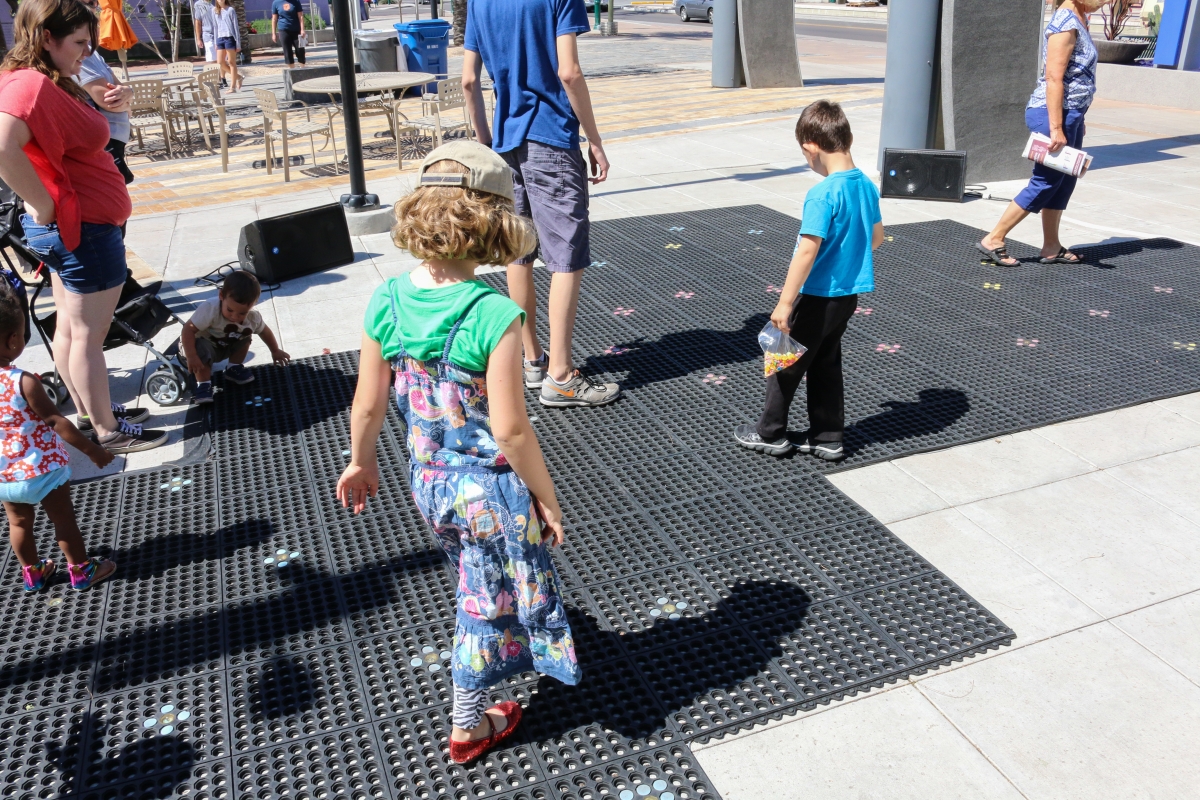
We had the opportunity to present a functioning prototype on-site during the Mesa Arts Center’s Spark Festival. Thousands of visitors attend the two-day festival, so it was a perfect chance to field test a number of different sensor layouts, shapes and densities, and different types of sounds as well.
This prototype represented a large amount of extra work: a whole other design exercise requiring portability and adaptability, rather than longevity. For this prototype we used stress-relief mats as a modular floor, and embedded sensors in epoxy octagons that could be press-fit into the holes in the mats.
The extra work paid off as we got two days to test layouts and sounds while observing the public’s reaction. Of equal importance, we could observe the shadows and quality of light in the approximate location of the final installation. This prototype provided us with valuable insights about the ideal density of sensors, and the ideal music: of all the sounds tested, everyone’s favorite seemed to be human voices.
Prototype 6:
With our notes from the previous prototype, we created and tested another full-scale sensor layout, this time with chalk and colored tape in a parking lot. This allowed us to make quick adjustments and to finalize an approximate layout.
Prototype 7:

We created another low-tech layout prototype. This one with paper printed to full scale and laid out in a parking lot behind our studio, giving us a sense of how it would finally look for a visitor. It allowed us one last chance to make refinements before committing to the final layout.
Prototype 8:
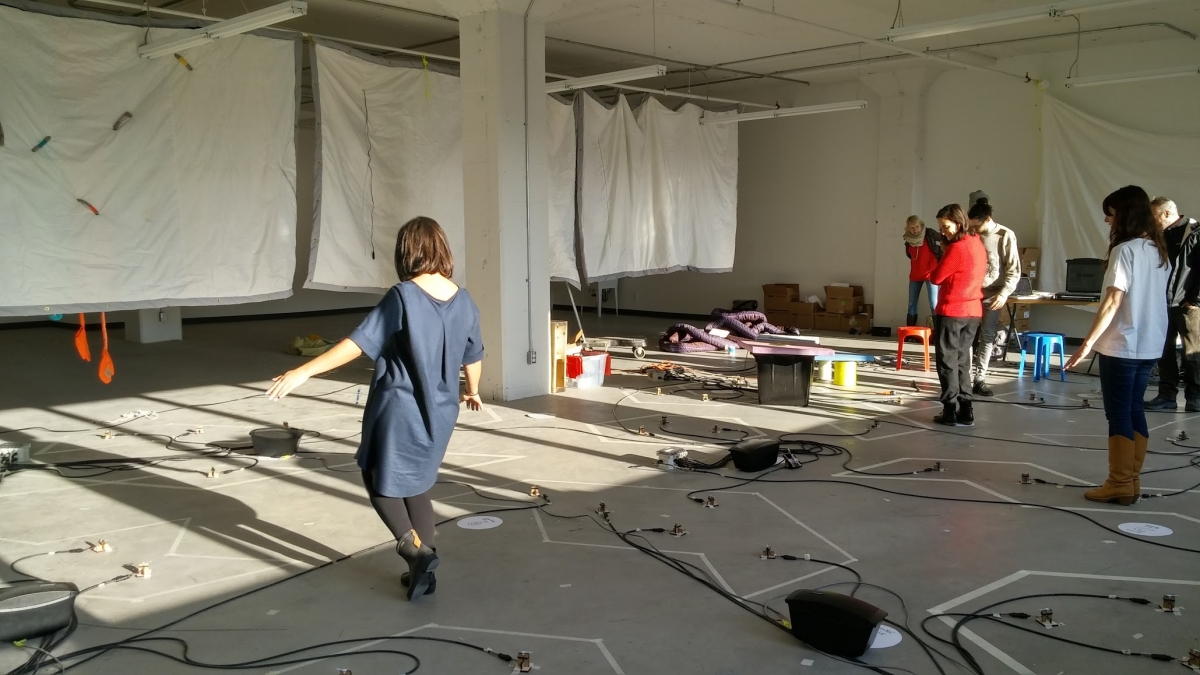
This prototype was a technical dress rehearsal, allowing us to run the software and hardware for a number of weeks in a row, testing for bugs. It also gave us a platform for testing and tweaking the audio.
Delivery:
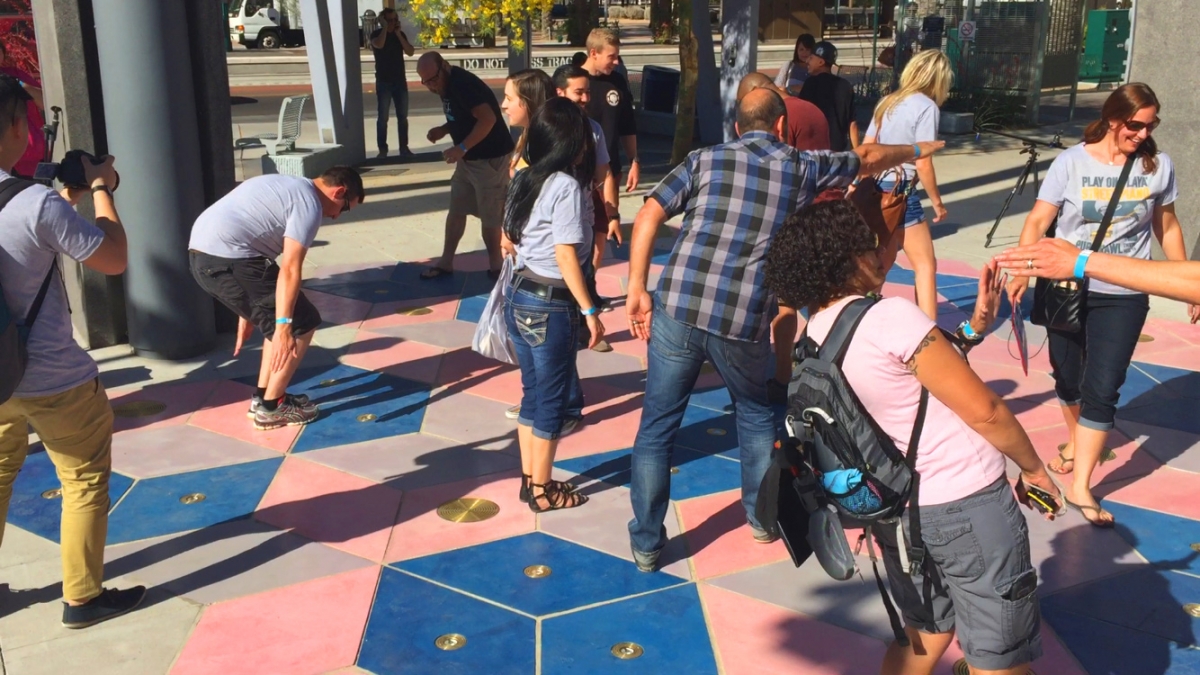
Mesa Musical Shadows opened in April 2016.

